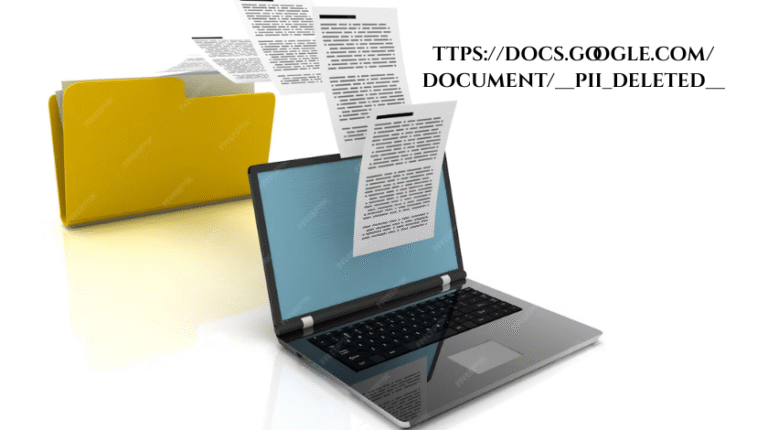When you stumble upon a link like docs.google.com/document/__pii_deleted__, it may feel cryptic but fear not. We’re here to unravel precisely what that means and how to turn it into a golden opportunity for insight.
1. Understanding “pii_deleted”
The presence of __pii_deleted__ in a Google Docs URL typically indicates that Personally Identifiable Information (PII) such as names, phone numbers, email addresses, or sensitive IDs has been removed or redacted. This action is taken to ensure privacy, security, and compliance with regulations like GDPR and CCPA.
2. Why Google Does This
a. Automated PII Detection
Google employs machine learning algorithms to spot patterns that resemble PII within documents or their URLs. Once detected, the unsafe elements are replaced to prevent misuse.
b. Regulatory & Policy Compliance
To help users and organizations meet evolving privacy standards and to avoid penalties Google uses this placeholder to signal that sensitive data has been sanitized.
c. Mitigating Data Leakage
By replacing original identifiers, Google protects against phishing, identity theft, or unintended exposure when documents are shared or publicized.
3. Common Misconceptions About __pii_deleted__
| Myth | Fact |
|---|---|
| It means the document is deleted or lost. | Not true it typically means the document exists, but sensitive elements were removed. |
| You can reverse it by editing the URL. | No this placeholder cannot be reversed or restored manually. |
| It happens only to public links. | Actually, it applies across many sharing types even to restricted access links. |
4. What You Can Do If You Encounter It
a. Verify Permissions
Ensure you have the right to access the document. If not, contact the owner for appropriate permissions or a fresh, sanitized link.
b. Ask for the Unredacted Version
If the removed information is essential and you’re authorized request a properly shared version, preferably with sensitive content omitted or securely delivered.
c. Find Alternative Sources
Sometimes the information you need might exist in another, safe-to-share document—so look before requesting redundant access.
5. Best Practices to Avoid the __pii_deleted__ Placeholder
-
Use Google’s Share Dialog
Instead of copying the URL from the browser, always use the Share button. That way, Google auto-generates safe, PII-free links. -
Avoid Sensitive Data in Document Titles or Content
Don’t include names or identifiers in the title or metadata of shared documents. That reduces redaction triggers. -
Set Granular Sharing Permissions
Limit access to only intended users and restrict editing or downloading as needed.Regularly Audit Shared Documents
Check who has access, remove outdated permissions, and ensure no sensitive info is inadvertently exposed.
6. When the Placeholder Is a Feature, Not a Bug
Understanding __pii_deleted__ isn’t a sign of failure it’s evidence that Google is actively protecting your data. Whether through internal policies, user actions, or behind-the-scenes scanning, this link format helps keep private information secure even when documents go public.
By following simple practices using Google’s built-in Share tools, avoiding sensitive info in titles, and setting permissions wisely you can harness Google Docs’ sharing power while ensuring compliance and safety.

